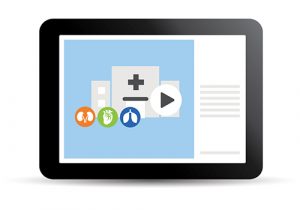Test Course History
Lorem Ipsum is simply dummy text of the printing and typesetting industry. Lorem Ipsum has been the industry's standard dummy text ever since the 1500s, when an unknown printer took a galley of type and scrambled it to make a type specimen book. It has survived not only five centuries, but also the leap into electronic typesetting, remaining essentially unchanged. It was popularised in the 1960s with the release of Letraset sheets containing Lorem Ipsum passages, and more recently with desktop publishing software like Aldus PageMaker including versions of Lorem Ipsum.

CME Test Course 011
Lorem Ipsum is simply dummy text of the printing and typesetting industry. Lorem Ipsum has been the industry's standard dummy text ever since the 1500s, when an unknown printer took a galley of type and scrambled it to make a type specimen book. It has survived not only five centuries, but also the leap into electronic typesetting, remaining essentially unchanged. It was popularised in the 1960s with the release of Letraset sheets containing Lorem Ipsum passages, and more recently with desktop publishing software like Aldus PageMaker including versions of Lorem Ipsum.
Testing Course 1
Lorem Ipsum is simply dummy text of the printing and typesetting industry. Lorem Ipsum has been the industry's standard dummy text ever since the 1500s, when an unknown printer took a galley of type and scrambled it to make a type specimen book. It has survived not only five centuries, but also the leap into electronic typesetting, remaining essentially unchanged. It was popularised in the 1960s with the release of Letraset sheets containing Lorem Ipsum passages, and more recently with desktop publishing software like Aldus PageMaker including versions of Lorem Ipsum.

Fundamentals of Therapeutic Plasma Exchange (TPE)
New Course!
Therapeutic plasma exchange, or TPE, is a component of the management of a wide range of clinical conditions. TPE involves the separation and removal of plasma, which often contains pathologically relevant substances, from the other components of blood. This removed volume is accounted for with the infusion of a replacement solution that also has the potential to add individual components that may be absent or deficient in the patient. TPE may be provided with different techniques, and this course has been designed to educate providers on the core aspects of TPE procedures, common clinical indications for this therapeutic approach, potential complications of TPE, and other clinical considerations such as anticoagulation management.

ECMO Physiologic Foundations for Practice-Changing Technology
New Course!
Extracorporeal Membrane Oxygenation, otherwise known as ECMO, is a technique that provides respiratory and/or cardiac support to patients whose own heart and lungs are unable to meet the body’s metabolic demands. The use of this technique has increased dramatically over the past decade, with a wide range of potential clinical applications. This activity is designed to familiarize you with key physiologic principles of respiratory and cardiovascular functions, how common pathologic conditions can disrupt cardiopulmonary function, and the role of ECMO in helping to preserve cardiopulmonary function.

Introduction to Continuous Kidney Replacement Therapy (CKRT)
This educational course is designed to provide an introductory overview of continuous kidney replacement therapy (CKRT), which is commonly used in the critical care setting. Several fundamental concepts will be addressed, including basics of kidney anatomy and function, options for kidney replacement in the critical care setting, fundamental principles governing different CKRT modalities, and a review of potential clinical challenges associated with CKRT. This is an opportunity for clinicians to enhance their familiarity with the terminology of CKRT and gain confidence in the understanding of its goals, mechanisms of action, and circuit components.
